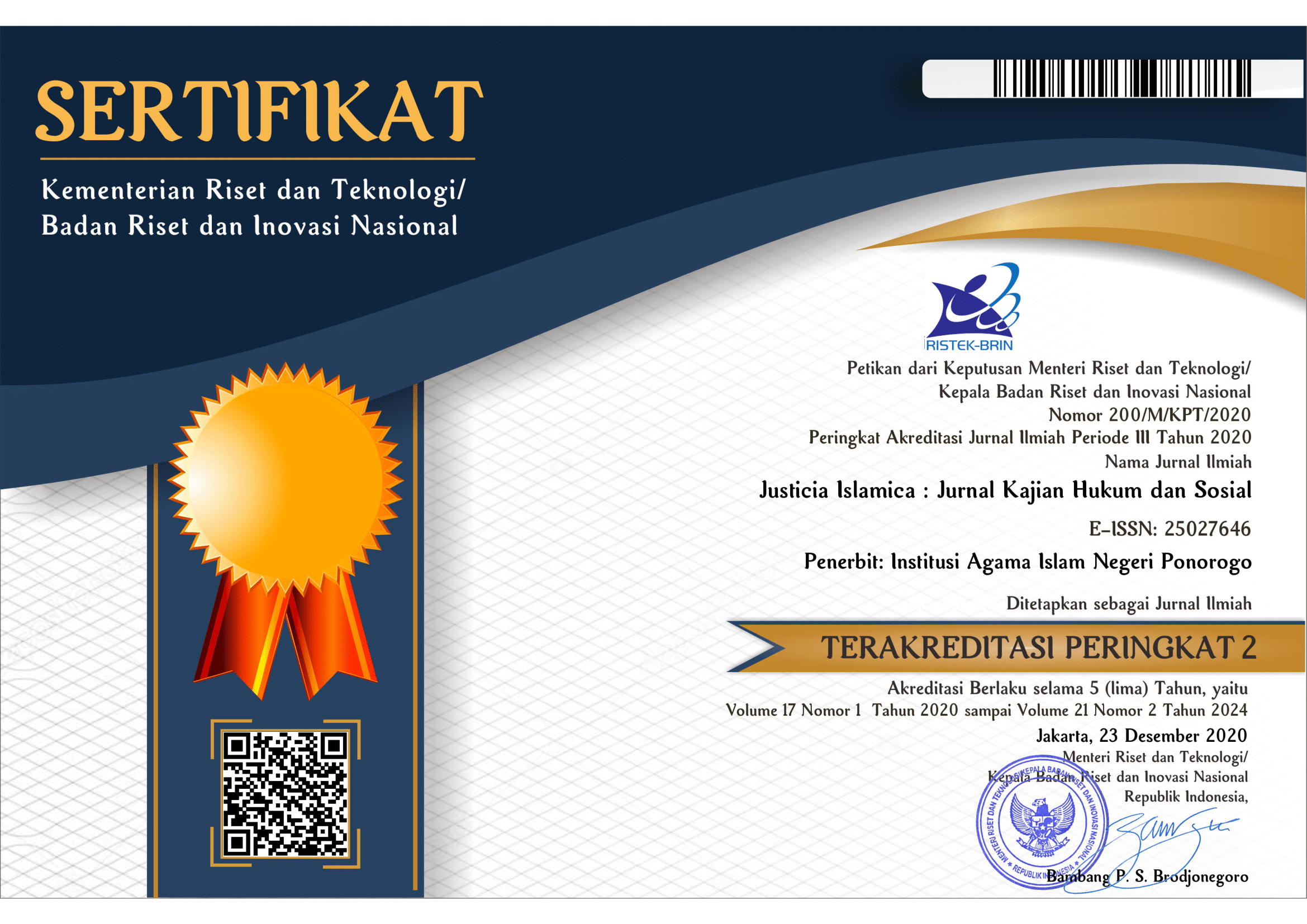Analisis Perjanjian Jaminan Fidusia terhadap Parate Eksekusi dan Perlindungan Hukumnya bagi Kreditur (Studi Kasus Pada BMT dan BPR Syariah Di Ponorogo)
DOI:
https://doi.org/10.21154/justicia.v11i1.96Abstract
Based on Law No. 42 of 1999 concerning Fiduciary Guarantees (abbreviated as UUJF), in addition to the credit agreement as the parent agreement, there should also be a fiduciary guarantee binding agreement to facilitate BMT and BPR Syariah in processing fiduciary guarantee certificates. The privilege of a fiduciary security certificate is that the BMT and BPR Syariah have the authority to execute and auction the fiduciary collateral themselves without having to go through the judicial process in court. However, because a fiduciary security certificate has never been issued, in the credit process at BMT and BPR Syariah, what is often a problem is the difficulties often faced by the BMT, namely if the debtor defaults or breaks promises in fulfilling his obligations, difficulty executing and auctioning the fiduciary collateral. And in the event of execution and auction, based on the UUJF, the implementation of execution and auction carried out by BMT and BPR Syariah in Ponorogo Regency so far has actually violated the law or can be considered illegal, even though BMT and BPR Syariah have dept collectors as officers who execute collateral objects.
Downloads
Published
How to Cite
Issue
Section
License
Copyright (c) 2025 Martha Eri Safira

This work is licensed under a Creative Commons Attribution-ShareAlike 4.0 International License.
Requirements to be met by the author as follows:
- Author storing copyright and grant the journal right of first publication manuscripts simultaneously with licensed under the CC BY-SA allows others to share the work with a statement of the work's authorship and initial publication in this journal.
Authors can enter into the preparation of additional contractual separately for the non-exclusive distribution of a decadent version of the journal issue (e.g., post it to an institutional repository or publish it in a book), with the recognition of initial publication in this journal.
Authors are allowed and encouraged to post their work online (e.g., in institutional repositories or on their website) before and during the submission process because it can lead to productive exchanges and citations earlier and more severe than published works. (see The Effect of Open Access).
This work is licensed under CC BY-SA.


















